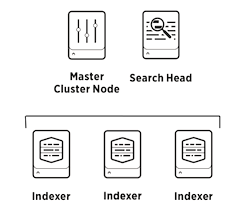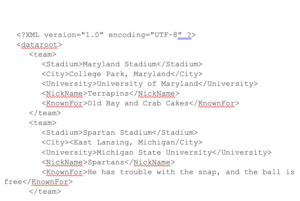

If a path is provided, the value of this path is extracted to a field named by the path or to a field specified by the output argument, if the output argument is provided.Ī location path contains one or more location stepsĪ location path contains one or more location steps, each of which has a context that is specified by the location steps that precede it. These fields default to _raw if another input source is not specified. By default, when the spath command is in "auto-extract" mode, it finds and extracts all the fields from the first 5,000 characters in the input field. When used with no path argument, the spath command runs in "auto-extract" mode. The spath command is a distributable streaming command. If the index refers to an XML attribute, specify the attribute name with an symbol. The index can be an integer, to refer to the position of the data in an array (this differs between JSON and XML), or a string, to refer to an XML attribute. A location step is composed of a field name and an optional index surrounded by curly brackets. A location path is composed of one or more location steps, separated by periods. If you do not specify the path=, the first unlabeled argument is used as the location path. The location path can be specified as path= or as just datapath. path Syntax: path= | Description: The location path to the value that you want to extract. Default: If you do not specify an output argument, the value for the path argument becomes the field name for the extracted value. Default: _raw output Syntax: output= Description: If specified, the value extracted from the path is written to this field name. Optional arguments input Syntax: input= Description: The field to read in and extract values from. For more information, see the evaluation functions. You can also use the spath() function with the eval command. The command also highlights the syntax in the displayed events list. The command stores this information in one or more fields. | lookup all_identities.The spath command enables you to extract information from the structured data formats XML and JSON. | lookup all_identities.csv email as EmailAddr OUTPUT userid as UserName Index="MyIndex" some search filters | spath "EmailAddr" | table EmailAddr


so, now from the first search you get email id as EmailAddr, you will match it with your inputlookup csv file and then by using OUTPUT (or OUTPUTNEW), you will list down the userid as UserName. Let me assume that, your lookup all_identities.csv got two fields: userid and email. | lookup usertogroup user as local_user OUTPUT group as user_group For any entries that match, the value of the group field in the lookup table is written to the field user_group in the event. For each event, the following search checks to see if the value in the field local_user has a corresponding value in the user field in the lookup table. Your events contain a field called local_user. This lookup table contains (at least) two fields, user and group. Suppose you have a lookup table specified in a stanza named usertogroup in the nf file. Lookup users and return the corresponding group the user belongs to What should be the required-field and required-field-values values you wrote? // lets understand from the splunk documentation.ġ. The regular "lookup" is to invoke field value lookups, which is exactly your use-case. Hi I use a regular lookup instead of using inputlookup? /// Yes, the inputlookup is to "view" the contents of a lookup file.


 0 kommentar(er)
0 kommentar(er)
